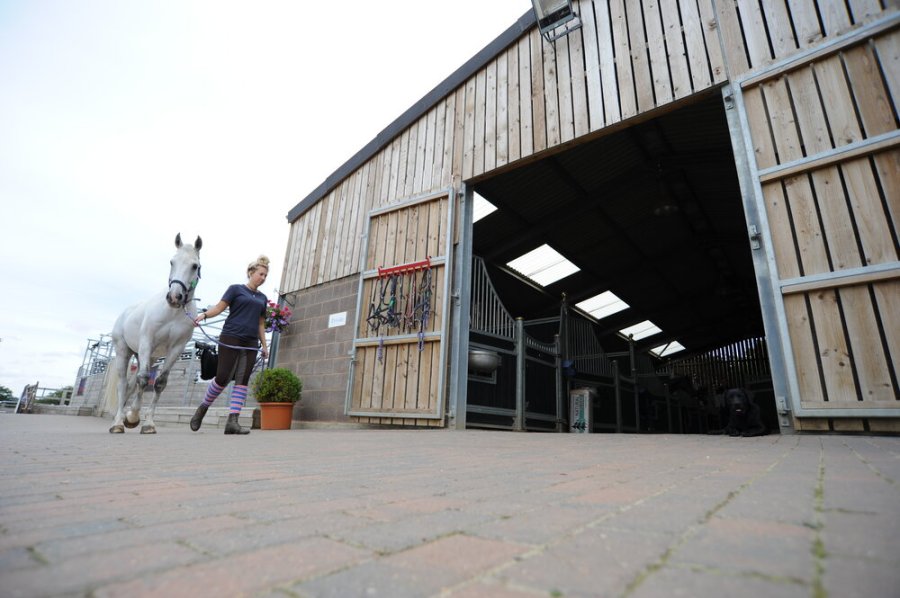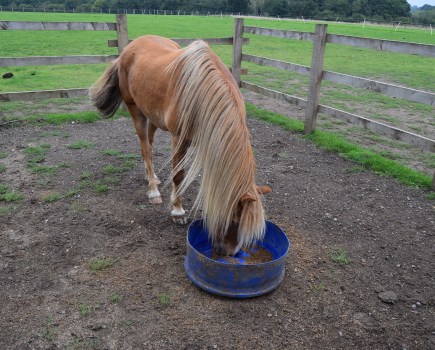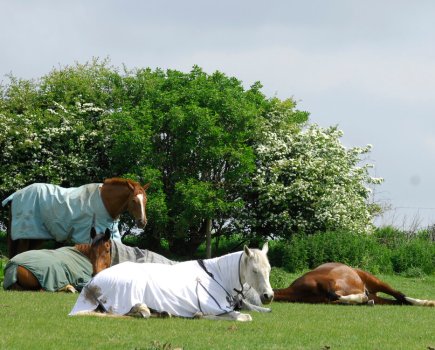Owners of livery yards have a responsibility to ensure the horses in their care are a healthy weight, but what happens when an owner and proprietor don’t see eye to eye? One equestrian centre owner explains how they manages this important relationship in the best interests of the horses on their yard, which is a major stepping stone towards combatting equine obesity and helping them to be #FitnotFat.
Seeing overweight horses on livery yards is sadly becoming more common than it used to be. When I worked on competition yards, I rarely saw an overweight horse, but now I run a yard with more leisure riders than competitive riders, I do have to manage the weight of horses more. Thankfully, the majority of owners who have kept horses with me are receptive to the need to keep their horses from getting too fat.
Difficult conversations
It can be difficult to know how best to approach and start a discussion with a horse owner who is stabling their horse with us and who needs to manage their horse’s weight, particularly if the owner has been looking after their horse themselves.
I have found a number of horses who have come from DIY yards or owner’s homes are overfed by their owners, and this can be a challenge when they arrive and they feel we are feeding less hard feed or different feeds.
It has been really helpful to bring in our feed company nutritionist with their weighbridge to weigh and condition score all the horses twice a year when possible. This is a free service most feed companies offer and helps to start a conversation with the owner about their horse’s weight and what we can do to help in a more objective way.
If the nutritionist supports my view that the horse is holding too much weight and agrees with my approach to their feed, it shows the owner that I’m not feeding less just to save my feed bills, but to help their horse.
Managing owners’ expectations
We all like to think our horses are working hard for us, but often they are not putting in as much effort as we think. When I have a new horse arrive on my yard, I always calculate their diet based on their body weight and work score to calculate the MJDE (energy) they need each day.
It does take a little more time, but if an owner has any questions about what we are feeding, I am able to show them the feed plan, so they can see how I’ve worked out the score for their horse. I now have the calculations set up on a spreadsheet, which makes it much quicker to do. If you are not confident doing this, a number of feed companies offer this diet planning as a free service.
I also allow my horse owners to see the feed board so they know what feeds their horse is being fed and encourage them to ask any questions.
I do ask owners to let me know if they feel their horse starts to lose or gain weight or has any change in behaviour when working, so we can review the feed plan if needed. This usually works to manage the owner’s expectations, and once they have had their horses with us for a few months they start to understand that their horse didn’t need as much hard feed as they first thought.
Changing opinion
I have had owners who have challenged my opinion that their horse is overweight, telling me he or she is in a good condition or it’s a muscle on their top line, not fat. If this happens and they are sensitive to the subject, I usually leave it for a couple of weeks and then try to approach the subject again, using the body scoring system to explain where the horse has fatter areas.
If they take offence, I arrange a visit from the nutritionist to provide an impartial view and ask the owner to attend, so they can speak directly to the nutritionist. This usually works. If a vet is on the yard, they can also help to confirm if a horse is carrying too much weight.
Being sensitive
It is hard moving a horse to a new yard and letting someone else manage their care and feeding, so I am sensitive to this change and try to explain what I am doing so the owner feels involved in all the decisions. At the end of the day, it is the owner’s horse, not mine, so if they are adamant that the horse is not overweight and they do not want to follow advice, I can only do so much.
As I manage the feeds on the yard, if an owner was totally against my feeding approach and we couldn’t find a solution, it would mean the owner leaving and finding a different yard, I haven’t had this situation occur yet, but if I felt the weight problem was a welfare issue and they would not listen to my or another professional’s advice, I would ask the owner to find a different yard, as I do need my owners to trust in the care we provide.
Providing options
I try and provide lots of different options to owners, as I find different horses need different solutions. I have Spanish horses, native ponies and cobs on the yard, who are all very good doers and can put on weight in a paddock that looks almost bare. We use electric fencing to split up our paddocks into different sizes, which helps to accommodate horses who need less grass. It also allows us to rotate the paddocks.
In spring and summer, I graze the fields that have been rested with horses who do not need weight management first, then I move the good-doers onto these areas. I also try and group the horses who put on weight easily, so they can be out together on the paddocks that have less grass.
Grouping the good-doers also helps if we have to keep any horses in their stables to reduce grass intake, as they are not stressed about being in when their friends are out in the field. We also offer the option of overnight turnout where possible.
I avoid fertilising the paddocks too often so the grass is not too rich, and I do not top the fields unless they get very overgrown. I have found the longer grasses are less rich and higher in fibre, so the horses put less weight on. I provide owners with the choice of hay or haylage and we use high-fibre hard feeds, with a balancer to help keep as much fibre in the diet as possible.
![]() Have you heard about Your Horse’s #FitNotFat campaign, which is supported by Dodson & Horrell? Equine obesity is an enormous welfare problem and we’re on a mission to provide owners and riders with the knowledge, skills and information you need to keep your horse in tip-top health. It could be life saving! Find out more
Have you heard about Your Horse’s #FitNotFat campaign, which is supported by Dodson & Horrell? Equine obesity is an enormous welfare problem and we’re on a mission to provide owners and riders with the knowledge, skills and information you need to keep your horse in tip-top health. It could be life saving! Find out more









